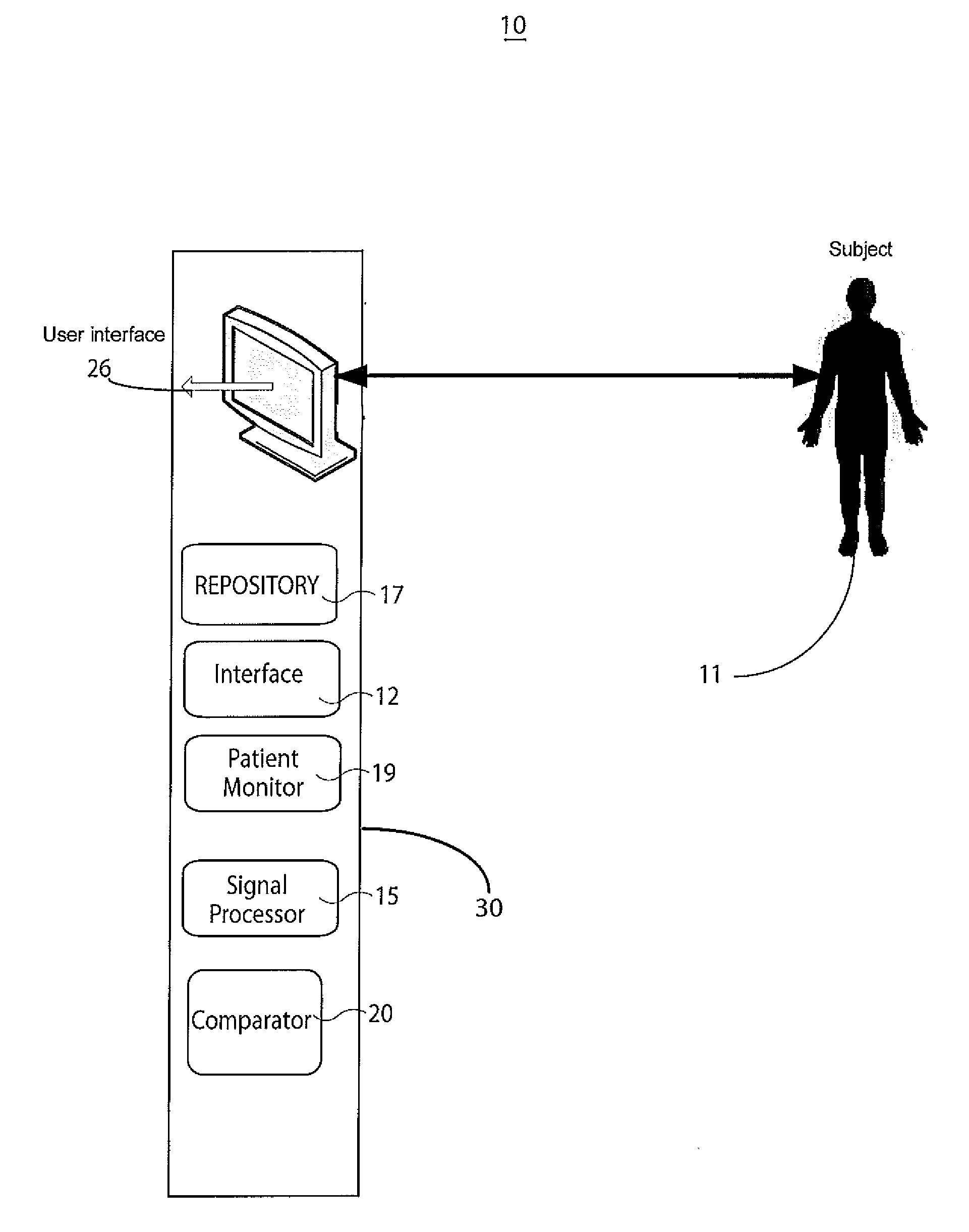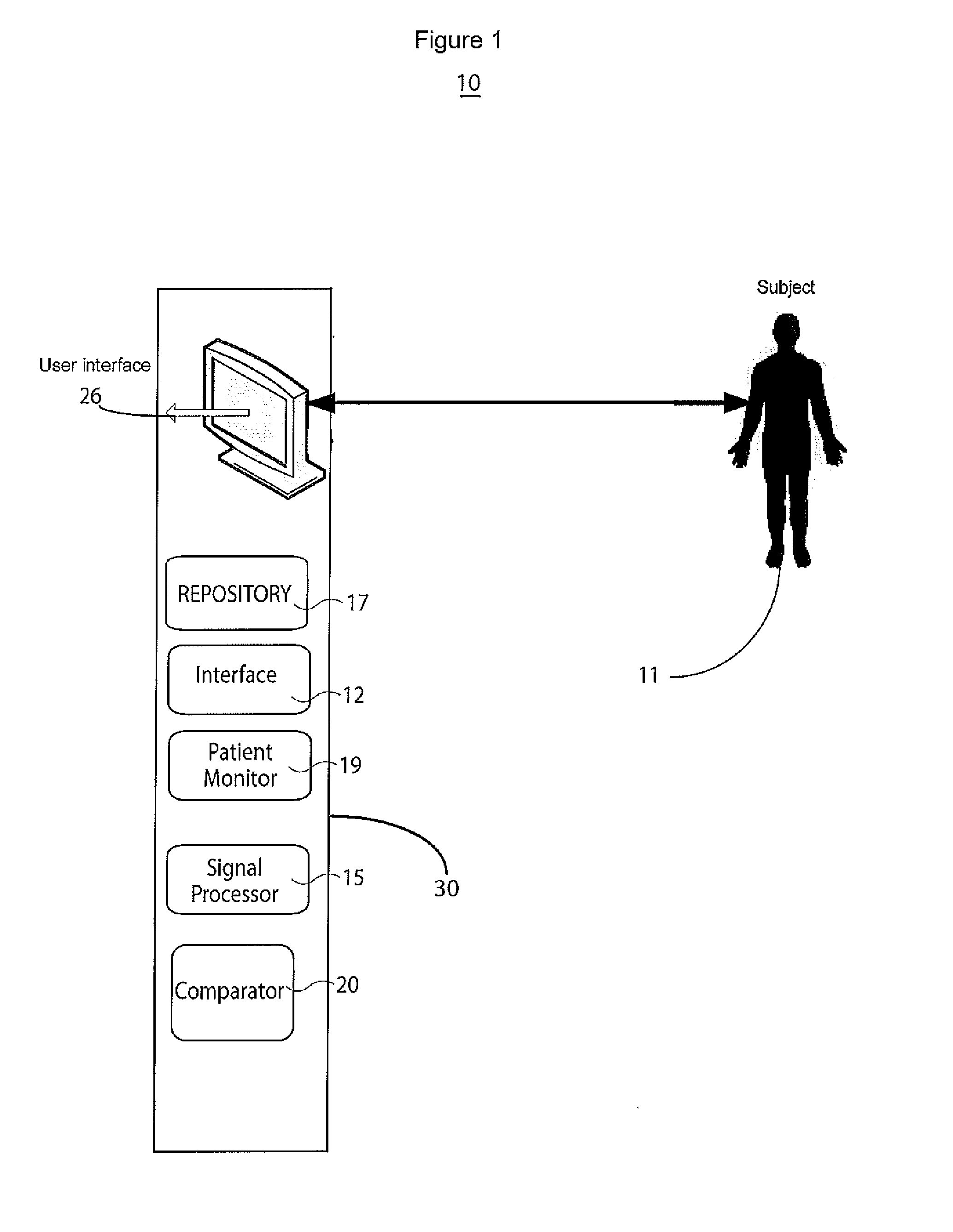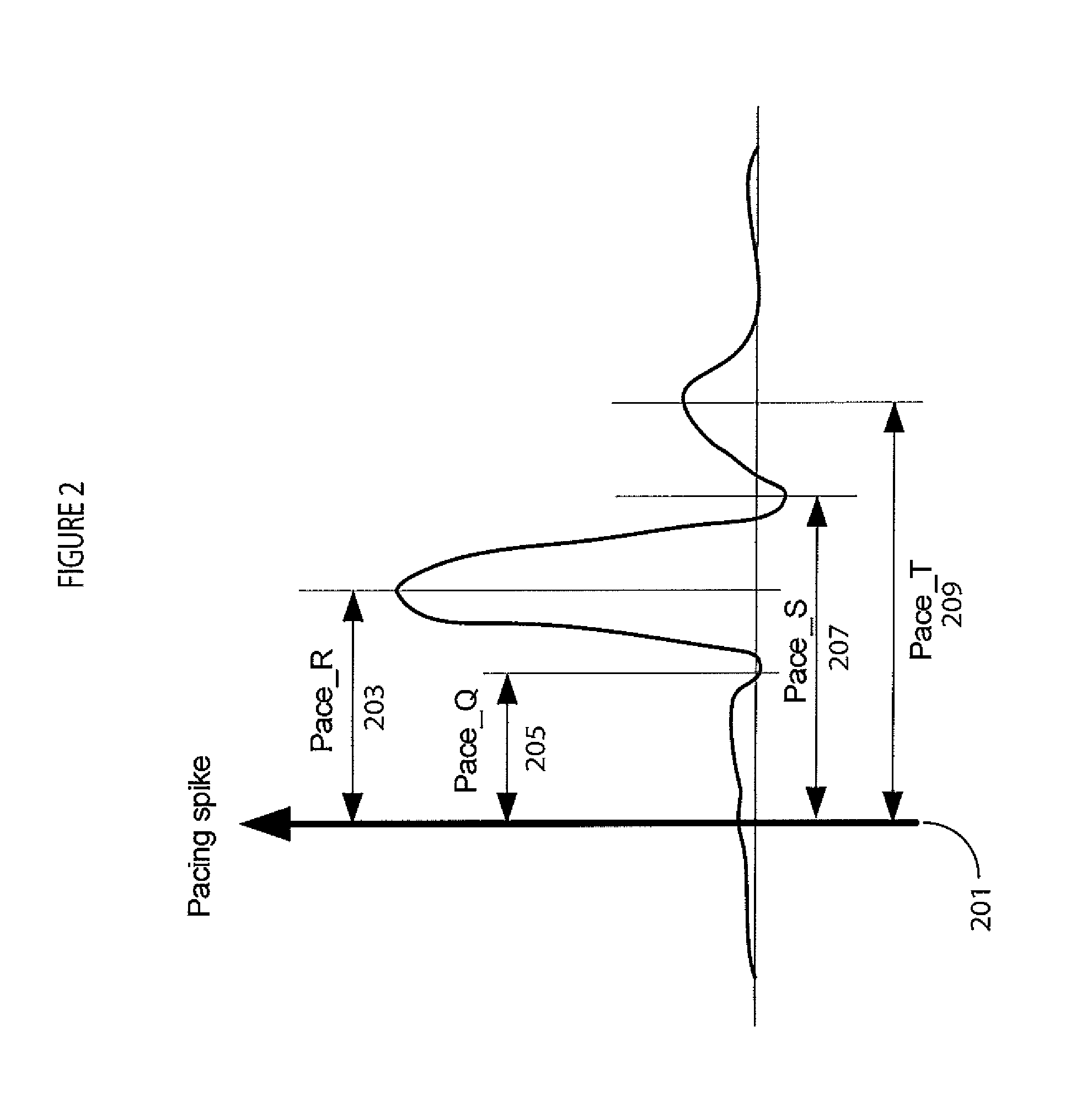System for Cardiac Arrhythmia Detection
a technology of cardiac arrhythmia and detection system, which is applied in the field of system for heart performance characterization and abnormality detection, can solve the problems of false alarm, failure to efficiently interpret and characterize cardiac signals during pacing, and use of p wave analysis methods, so as to improve the analysis and interpretation of cardiac electrophysiological activities.
- Summary
- Abstract
- Description
- Claims
- Application Information
AI Technical Summary
Benefits of technology
Problems solved by technology
Method used
Image
Examples
Embodiment Construction
[0015]A system improves accuracy and reliability of analysis and interpretation of cardiac electrophysiological activities, by characterizing cardiac electrophysiological signals (including surface ECG signals and intra-cardiac electrograms) in response to synchronization with a cardiac signal (such as for pacing or stimulation). The system synchronizes to locate and determine statistical characteristics and variation of different portions of a cardiac signal to provide an accurate time, location and severity of cardiac pathology and events for improved diagnosis. The system identifies cardiac disorders, differentiates cardiac arrhythmias, characterizes pathological severity, predicts life-threatening events, and supports evaluating drug delivery effects. The system analyzes cardiac electrophysiological signals and determines patient health status during pacing using pacing signal synchronization and stimulator control and adjustment (such as anti-tachycardia pacing) to provide an o...
PUM
 Login to View More
Login to View More Abstract
Description
Claims
Application Information
 Login to View More
Login to View More - R&D
- Intellectual Property
- Life Sciences
- Materials
- Tech Scout
- Unparalleled Data Quality
- Higher Quality Content
- 60% Fewer Hallucinations
Browse by: Latest US Patents, China's latest patents, Technical Efficacy Thesaurus, Application Domain, Technology Topic, Popular Technical Reports.
© 2025 PatSnap. All rights reserved.Legal|Privacy policy|Modern Slavery Act Transparency Statement|Sitemap|About US| Contact US: help@patsnap.com



